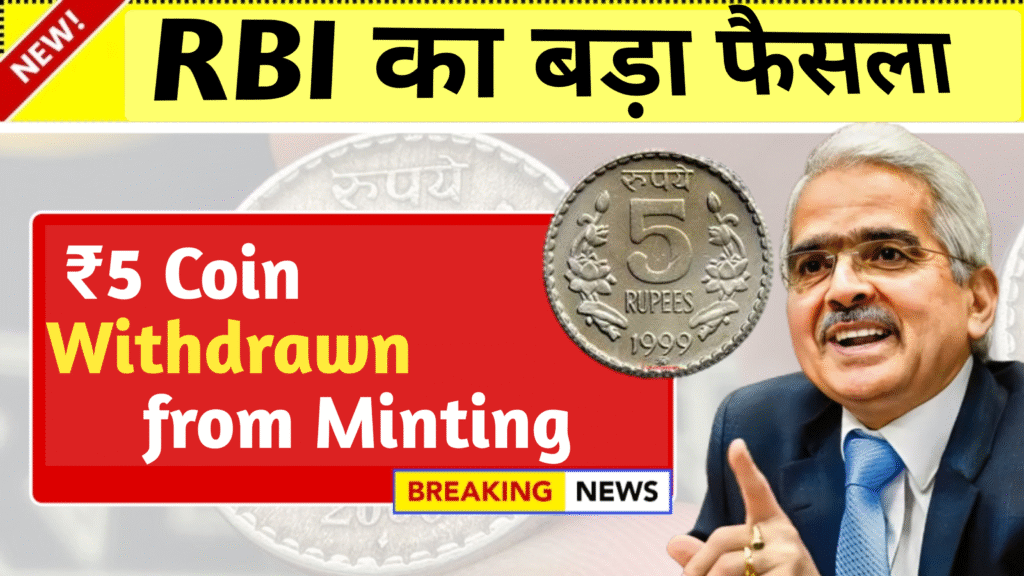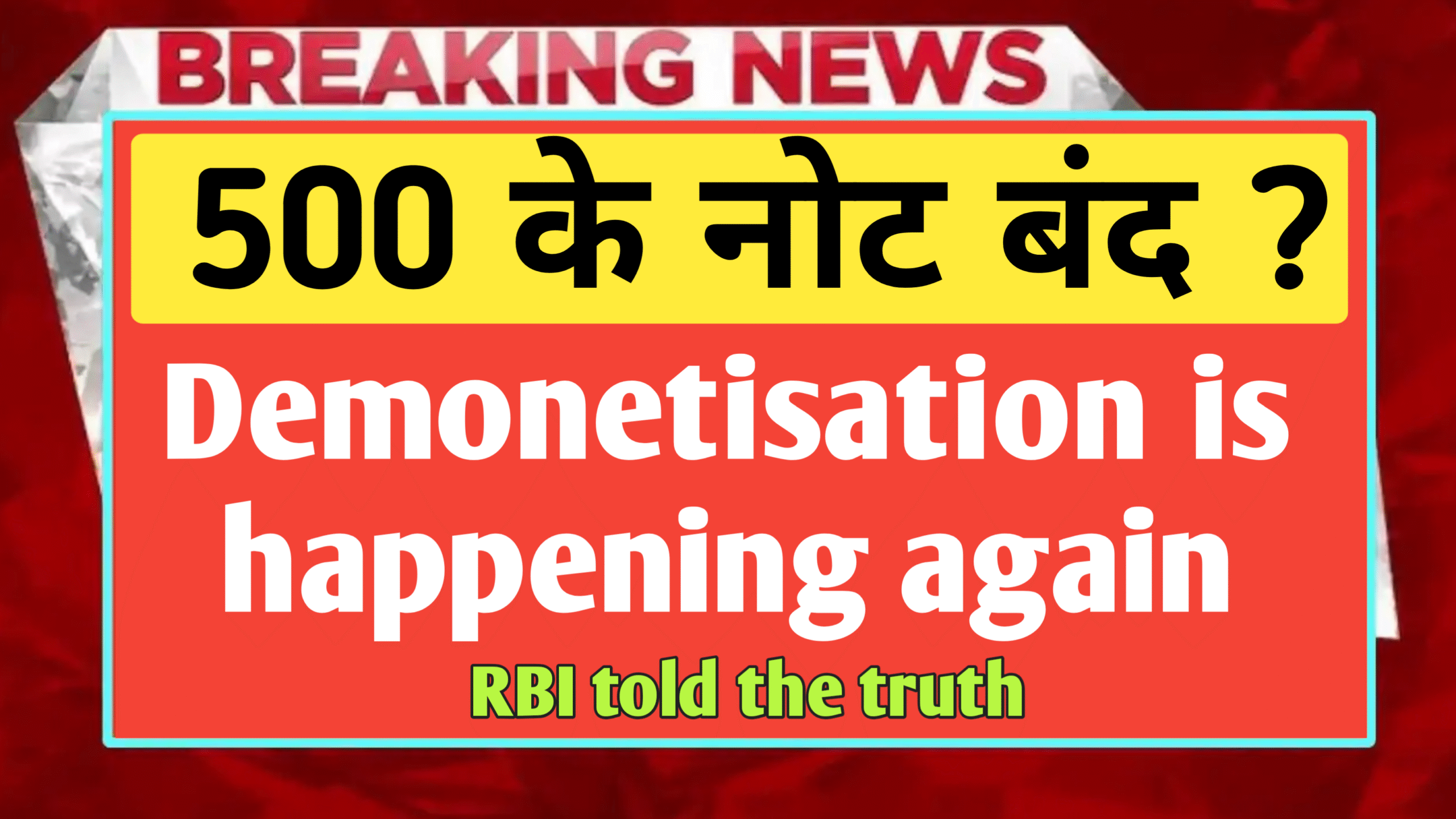New Delhi – The Reserve Bank of India (RBI) has decided to stop the production of thick metal ₹5 coins due to serious concerns involving economic loss, security threats, and illegal cross-border trade. This move is part of RBI’s larger effort to maintain the integrity of India’s currency system and combat misuse of coinage for unlawful purposes.
What’s Changed?
Until recently, two different types of ₹5 coins were in circulation:
- Brass-based thin coin
- Heavy metal thick coin
Now, only the thin, brass ₹5 coins are being minted and released. The thick variant has been officially withdrawn from production, though it still remains legal tender for everyday transactions.
Economic Reason Behind the Decision
The primary economic trigger for this decision was the rising intrinsic value of the metal used in the thick ₹5 coins. According to monetary science, when the value of metal in a coin exceeds its face value, it becomes prone to melting and misuse.
For instance:
- One thick ₹5 coin could be melted down to manufacture 4 to 6 razor blades.
- Each blade could sell for ₹2, making the total resale value of one coin ₹8 to ₹12.
- This directly resulted in an artificial shortage and manipulation of the coin supply in the market.
This posed a major threat to the stability of India’s physical currency system, forcing the RBI to act decisively.
Security and Smuggling Concerns
Beyond the economic angle, national security agencies raised alarms about increasing illegal smuggling of Indian ₹5 coins—particularly to Bangladesh.
Investigations revealed:
- Indian coins were being smuggled in bulk across the border.
- In Bangladesh, the coins were being melted and converted into razor blades or other metallic goods.
- The demand for Indian coins in neighboring countries surged due to the higher metal quality of these thick coins.
This not only represented a loss of national assets but also posed serious risks, including:
- Potential misuse by organized criminal networks.
- Threats to cross-border security.
- Erosion of trust in Indian coinage.
RBI’s Response: New Coin Design and Policy Update
In response to the growing crisis, RBI collaborated with government mints and economic advisors to develop a new, secure, and cost-efficient version of the ₹5 coin.
Key Changes in the New ₹5 Coin:
- Material: A special brass alloy that is lighter and less valuable than the previous thick version.
- Design: Slimmer profile with enhanced anti-counterfeiting features.
- Cultural Elements: Incorporates Indian symbols and themes to reflect national identity.
- Lower Melting Value: The new metal composition ensures it cannot be economically repurposed for other items.
These changes are aimed at discouraging illegal trade and securing the integrity of small denomination coinage.
How Currency Minting Works in India
For those unfamiliar with the currency minting process, both the Reserve Bank of India (RBI) and the Government of India play active roles.
Currency Policy Lifecycle:
- RBI recommends updates or discontinuation of specific coins/notes.
- Central Government reviews and approves the proposal.
- Final decision is implemented through the Indian mints.
Also Read:
This is the same process followed for both introducing new coins and withdrawing outdated ones.
Important Update for the General Public
While the production of thick ₹5 coins has been stopped, the RBI has clarified that:
- They are still valid legal tender.
- Citizens can continue using them in transactions until they naturally wear out or are withdrawn by banks.
- There is no need to exchange these coins unless specified by an official RBI notification.
The RBI also advised the public not to trust social media rumors or unverified reports. All official updates are published on the RBI official website.
Current Valid Coin Denominations in India (2025)
As of June 2025, the following coins are in circulation:
| Denomination | Status | Description |
|---|---|---|
| ₹1 | In Circulation | Standard coin |
| ₹2 | In Circulation | Thin coin with updated design |
| ₹5 | In Circulation | Only thin brass variant being minted |
| ₹10 | In Circulation | Bi-metallic design |
| ₹20 | In Circulation | Dodecagon (12-sided) coin |
All these coins are minted as per new RBI specifications to prevent smuggling and economic misuse.
Impact on Razor Blade Industry and Illegal Trade
This move is expected to deal a heavy blow to underground markets where currency melting and metal resale was being carried out secretly.
- Industries involved in illegal blade production from ₹5 coins will no longer find it economically viable.
- Cross-border smuggling is likely to reduce with the fall in material value.
- Overall, this enhances currency confidence among Indian citizens.
A Necessary Step for Long-Term Stability
The RBI’s step to discontinue the minting of thick ₹5 coins may seem small but it addresses significant economic and security concerns. It shows how deeply interlinked currency design is with national security, trade policies, and public trust.
As India continues its push toward a more secure, efficient, and digital economy, ensuring the physical integrity of currency remains a cornerstone. The new ₹5 coins mark yet another move toward safeguarding the monetary ecosystem.


















1 Comment
Hi there! This post couldn’t be written any better! Reading through this post reminds me of my previous room mate! He always kept talking about this. I will forward this article to him. Pretty sure he will have a good read. Thank you for sharing!